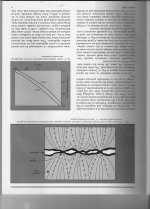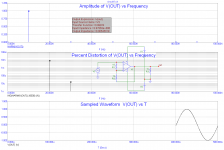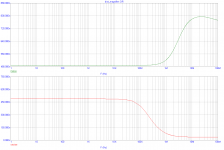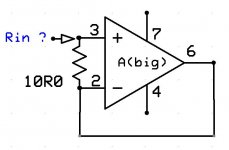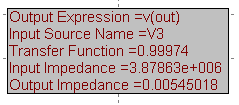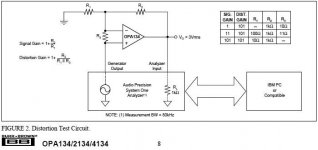A tick from me, I haven't used them seriously in a project yet, but assembled a test setup with the "poorer" performing version, and was completely happy with the results. My main concern was that I didn't have a high speed clock around spitting out RF garbage, so I did this using completely discrete logic, and up, down push buttons to change levels. So that once the level changed there was no digital pollution in the picture ...About pots, what did-you think about PGA23XX ? With no contact noise, no wear, and a HD+n of ~0.0002%, i think we can consider those as "quality" parts despite the low price ?
Frank
As this took me 4 hours I am not inclined to do much more.
ES
ED,
Nice work its amazing to see such low readings being made.
Still I dont understand how the effect can produce a second?
Thank
-Antonio
First, I still prefer an Alps pot to ANY electronic volume control. I hope to stand corrected on this, one day.
Second, I can't teach a course in connector/relay design. IF you want to understand the differences in switches, then study up, yourself. Everybody and his brother knows that I PREFER Shallco silver switches, then sealed relays with gold on gold contacts.
However, cheap switches made of tin or zinc alloys, etc, may actually not sound too good after a while due to internal tarnishing, etc. But they may be perfectly good for an off-on switch or a relay control.
Second, I can't teach a course in connector/relay design. IF you want to understand the differences in switches, then study up, yourself. Everybody and his brother knows that I PREFER Shallco silver switches, then sealed relays with gold on gold contacts.
However, cheap switches made of tin or zinc alloys, etc, may actually not sound too good after a while due to internal tarnishing, etc. But they may be perfectly good for an off-on switch or a relay control.
A tick from me, I haven't used them seriously in a project yet, but assembled a test setup with the "poorer" performing version, and was completely happy with the results. My main concern was that I didn't have a high speed clock around spitting out RF garbage, so I did this using completely discrete logic, and up, down push buttons to change levels. So that once the level changed there was no digital pollution in the picture ...
Frank
my concern about them is no matter what care you may have gone to beforehand, the output is channeled through the internal opamp with a fair serve of feedback. i'm not anti-opamps (or anti feedback), I dont always use them but have had excellent results with well executed designs.
the thing is, if your pot has them inside, why bother with any analogue stage, you have just put everything through the lens of the opamps in the volume control. may as well just put one directly after a voltage output dac and be done with it.
seems a bit boring to me, at that point I may as well buy commercial.
My goal is optimum quality, the path to getting that is all that matters, boring or otherwise. It may be a single chip, but everything that's relevant to getting discrete circuitry to behave itself is also important here: power supplies, grounding, protection from interference. Get that wrong, and you might as well not have bothered trying the exercise ...the thing is, if your pot has them inside, why bother with any analogue stage, you have just put everything through the lens of the opamps in the volume control. may as well just put one directly after a voltage output dac and be done with it.
seems a bit boring to me, at that point I may as well buy commercial.
There are never, ever, ever magic solutions to getting sound to jump cleanly through the hoop; only by being obsessive about each and every detail does it all come together ...
Frank
Last edited:
seems a bit boring to me, at that point I may as well buy commercial.
I suppose at this level of noise/distortion that no difference can be shown on measurements between the two. So it is a subjective preference ?First, I still prefer an Alps pot to ANY electronic volume control.
However, can-you define the differences you feel (hear) and if you made blind tests between the two with consistent results (I know Alps is hype and you are kind a fashion victim/executioner) ?
On my side, with the simplicity they provide, the low cost, the precision of levels between channels, the reliability and the ease of remote, i think that it is currently the best solution on the shelf .
I use 3 of them for my active system: One for bass (left channel) treble(right hannel) of each stereo active enclosures, one for the sub. This allow the remote to be in the preamp, and the signal to be send full level to each enclosures, reducing signal/noises induced in the links between preamps and amps. All in one, the result is better that any other solution i had tried.
Asinus asinum fricat.Good accuracy .......
Last edited:
First, I still prefer an Alps pot to ANY electronic volume control. I hope to stand corrected on this, one day..
I moved from Alps to TVC, from TVC to LDRs, and later from LDRs to 32 bit Digital. ( I use mostly digital sources )
For me, every analogue type I tried had a signature but LDRs - with very carefully made PSU arrangement - was the cleanest sounding I had heard.
The 32 bit digital control does not seem to have a signature - at least not one that I can hear - so I've stopped thinking about volume controls.
Last edited:
I moved from Alps to TVC, from TVC to LDRs, and later from LDRs to 32 bit Digital. ( I use mostly digital sources )
For me, every analogue type I tried had a signature but LDRs - with very carefully made PSU arrangement - was the cleanest sounding I had heard.
The 32 bit digital control does not seem to have a signature - at least not one that I can hear - so I've stopped thinking about volume controls.
^^ this, proper gain structure and 32+ bit digital volume control has been end-game for me as well, I dont see me building a dac without it any time soon and it creates a great deal of freedom. I can have the accuracy and simplicity of an essentially free volume control of as many channels as I like, from the comfort of my chair with my ipad remote. perfect channel matching of what is effectively a 12 deck volume control for me, that I can turn only one deck or all at once.
I did miss the tactile feedback, so one of my next projects is a master MCU with a huge titanium knob attached to one of these Elma E50 Magneto-optical encoders
^ the above is a direct link to the PDF datasheet, dont be alarmed if it looks to start a download immediately. these are used on pro mixing desks and instrumentation, have a nice feel similar to a well oiled stepped attenuator, but is continuous rotation with integrated pushbutton. It has no physical contacts at all and is actually quite substantial and well made, like most of their switch products
Esperado said:On my side, with the simplicity they provide, the low cost, the precision of levels between channels, the reliability and the ease of remote, i think that it is currently the best solution on the shelf .
I use 3 of them for my active system: One for bass (left channel) treble(right hannel) of each stereo active enclosures, one for the sub. This allow the remote to be in the preamp, and the signal to be send full level to each enclosures, reducing signal/noises induced in the links between preamps and amps. All in one, the result is better that any other solution i had tried.
fair enough, but so does fully digital and if all sources are digital then why not control at the source? for me no mechanism is better than any mechanism.
Last edited:
Yes, the values attached in the picture here:
http://www.diyaudio.com/forums/anal...ch-preamplifier-part-ii-3259.html#post3323513
applied to DC gain and DC impedances. (for OPA627)
http://www.diyaudio.com/forums/anal...ch-preamplifier-part-ii-3259.html#post3323513
applied to DC gain and DC impedances. (for OPA627)
Attachments
those folks who do try are ridiculed by the peanut gallery.
Peanuts are fine with my beer. If they throw that stuff, I have to do something.
Distortion Gain (Noise Gain) equation in vacuphile attachment may be a good opportunity
However in the LM4562 data sheet I found a wonderful curve, Phase vs Gain. If accurate, this device would do wonders for some types of signal processing. But I think they really meant phase margin.
Ed
There would be a real problem (and it would be a technological peculiarity as well) if the graph showed phase margin.
The graph is Phase Response but degrees indicate phase lag.
And it is very good IMO. 70d 10Hz-80MHz , 20d 10Hz–4MHz.
What is your reservation ?
George
Attachments
I did miss the tactile feedback, so one of my next projects is a master MCU with a huge titanium knob attached to one of these Elma E50 Magneto-optical encoders
Are you sure 10 million revolutions will be enough?
#CheGuevara
Thanks for the input, mikelm and Qusp. We have used Alps as a de facto minimum standard potentiometer for many decades. There are better, but then there are many that are much worse, including the majority of electronic volume controls.
It is interesting that some of you who discriminate between audio parts have found some pretty good, if not excellent solutions, to replacing Alps or even better pots with digital electronics. Alps is gearing down, just like Toshiba, and they do not offer everything that they have made for decades, such as 4 gang pots, anymore. Big problem for me in future designs.
It is interesting that some of you who discriminate between audio parts have found some pretty good, if not excellent solutions, to replacing Alps or even better pots with digital electronics. Alps is gearing down, just like Toshiba, and they do not offer everything that they have made for decades, such as 4 gang pots, anymore. Big problem for me in future designs.
Yes, the values attached in the picture here:
http://www.diyaudio.com/forums/anal...ch-preamplifier-part-ii-3259.html#post3323513
applied to DC gain and DC impedances. (for OPA627)
Sorry PMA missed that, I was going then to say what changes when you add the 1k, you get 100 more of the input error signal for 101 times it at the output (within a tiny amount). I wanted to show it without having to do equations for the absolutely exact answer to more digits than matters.
The problem is CMRR error is also amplified, presumably heavily loaded gain is clearly worse (not necessarily)? At gain of one you see the common mode error anyway but not as a gain of 101 follower.
Sorry for getting impatient, but presented this simply I think this is pretty basic stuff.
Last edited:
Thanks for the input, mikelm and Qusp.
Having just said that I'm not thinking about pots anymore I now find myself thinking once again about LDR's and if in light of what I've learnt over the last 2 years and from reading this thread whether I could implement them better than I did last time somewhat close to Pietjers suggestion here http://www.diyaudio.com/forums/anal...uator-new-passive-preamp-102.html#post1392586.
I remember how very impressed I was with the sound when I first built this circuit with the LDRs driven with CCSs - such clarity & verve compared with TVCs. Careful implementation makes a big difference to final perfomance.
I would be interested to hear your impression of LDRs as a breed what you regard as their limitations.
For me one of their biggest strengths is that there are no wipers - every connection can be soldered. (edit: having first cleaned the surfaces
If I had to use an analogue pot I would make comparisons between LDRs and stepped attenuators but LDRs are much cheaper
Last edited:
IMO the best way to do volume control is to use quality signal relays and resistor ladder (L-cell,step 0,5-1dB),with minimum possible impedance.
I've tried it. You need to get the relay switching times accurate to prevent zipper noise, and the rollover at half scale can be problematic. It can and has been done, but to get it really right takes some effort. PGA2320 is fantastic. Just buffer before and after. 1ppm ballpark achievable.
Hi mikelm. can-you give us some more words about the listening feelings differences between the different type of volume control you have experienced ?I now find myself thinking once again about LDR's
About LDRs, how is the attenuation curve ? Close enough to logarithmic ? How is the accuracy between the two channels ?
Last edited:
- Status
- Not open for further replies.
- Home
- Member Areas
- The Lounge
- John Curl's Blowtorch preamplifier part II

